#UHF Module
Explore tagged Tumblr posts
Text
https://www.futureelectronics.com/p/semiconductors--wireless-rf--rf-modules-solutions--gps/zed-f9h-01b-u-blox-7168460
Bluetooth Module, UHF Module, F Modules, UHF Module, Bluetooth Accessories
ZED-F9P Series 3.6 V 159 dBm Surface Mount U-Blox F9 High Precision GNSS Module
#Wireless & RF#RF Modules & Solutions#GPS#ZED-F9P-01B#u-blox#Bluetooth Module#UHF Module#Bluetooth Accessories#Uhf serial#Zigbee Module#Proprietary RF Module#RFID Module solutions
1 note
·
View note
Text
https://www.futureelectronics.com/p/semiconductors--wireless-rf--rf-modules-solutions--rfid/mlx90109edc-aaa-000-re-melexis-4229597
RFID Module, UHF Module, Proprietary RF Module, Rfid proprietary modules
MLX90109 Series 3.1 to 5.5 V 3 mA 125 kHz RFID Transceiver - SOIC-8
#Wireless & RF#RF Modules & Solutions RFID#MLX90109EDC-AAA-000-RE#Melexis#Bluetooth devices accessories#Zigbee devices serial solutions#Bluetooth Module#RFID Module#UHF Module#Rfid#Proprietary GPS modules#Uhf serial devices solutions
1 note
·
View note
Text




Communication between the SR 71 and the KC 135Q had to be secure. The enemy would listen in vain, trying to find their location and their next rendezvous with a tanker. The RSO had a Modulator/ demodulator modem control panel. He used a five-digit code that he punched to secure communications. The KC 135Q, which is equipped with the same UHF radio and has the correct mission code and address number, could receive the SR 71 range as well. There was an interconnected phone that the crewmembers of both the SR 71 and the KC 135Q could talk to each other during this refueling time.
The tankers were always a welcome sight to the SR 71 crew. After a while, the cockpit would get a little warm. After refueling, the cockpit was noticeably cooler. Tankers could give life-saving information to the crewmembers by being able to look at the airplane and noticing if something was Wrong (Engine on fire, yes, that happened) with the airplane. Thank you to all KC 135 pilots and crewmembers for helping keep the SR 71 going all those years.
Written by Linda Sheffield Miller
@Habubrats71 viaX
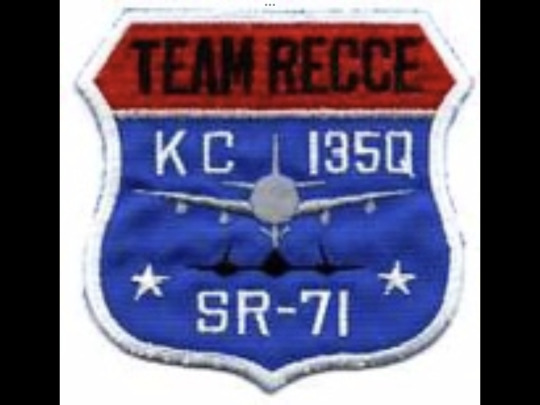
23 notes
·
View notes
Text
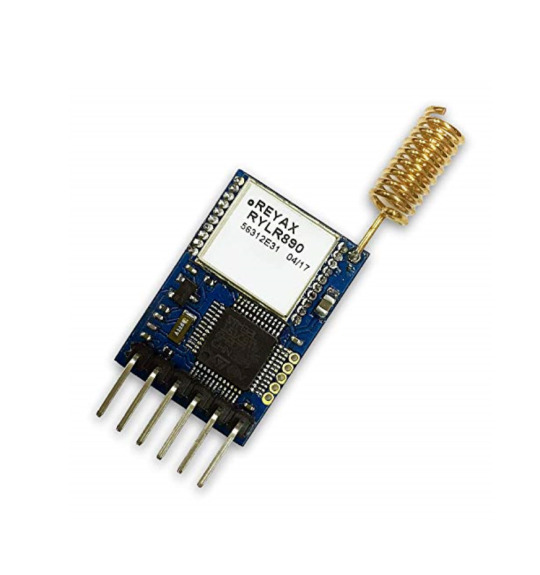
LoRa communication Module
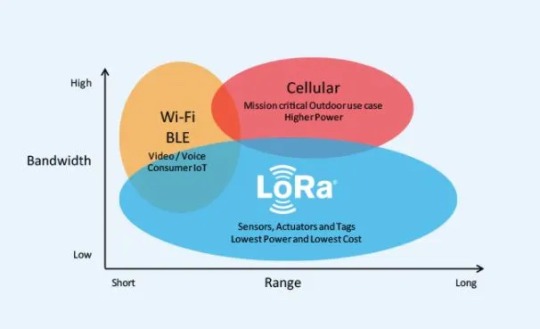
youtube
:
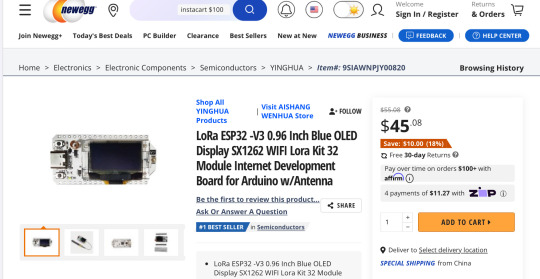
. https://www.newegg.com/p/2A3-00UG-000J9
youtube
.
.
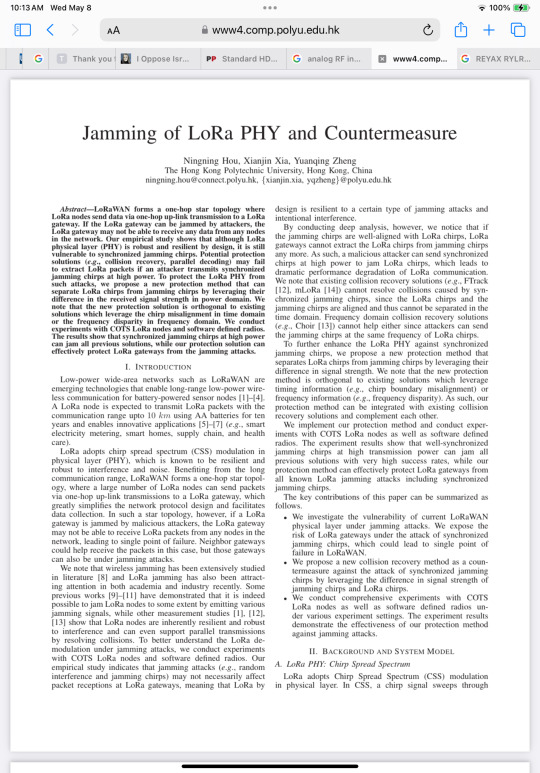
. https://www4.comp.polyu.edu.hk/~csyqzheng/papers/LoRaJamming-INFOCOM21.pdf
2 notes
·
View notes
Text
CGR 1020(U) Ground-to-air radio communications system
More specifically, it appears to be the receiver with the UHF module installed

#this must be the laziest museum ever#you literally have the name plate just google it ffs#ham radio
93K notes
·
View notes
Text
Avery Dennison at The Battery Show 2025
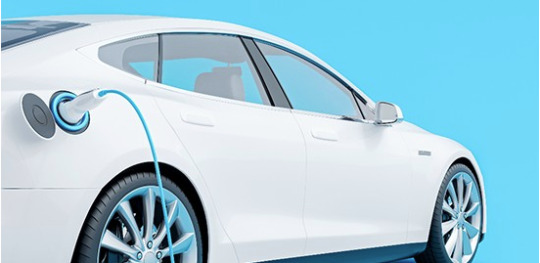
Avery Dennison will return to The Battery Show Europe 2025 in Stuttgart to showcase its latest innovations in pressure-sensitive adhesives and RFID technologies — designed to meet the evolving needs of electric vehicle (EV) battery manufacturers and OEMs.
Under the theme 'Making Possible,' the company will present how its solutions connect the physical and digital to ensure safety, performance and longevity across the battery lifecycle. With a portfolio that spans bonding, insulating, protecting and tracking, Avery Dennison supports every layer of EV battery design — from cell to pack.
“We’re focused on delivering solutions that help our customers meet the industry’s toughest demands,” said Martin Dolezal, marketing manager, automotive and energy storage. “Whether it’s enhancing thermal management, achieving digital traceability or reducing material impact, our technologies are built to perform in real-world conditions and ready for what’s next.”
Performance tapes: Electrical insulation and tailored venting films
Attendees will find out more about two key tape technologies essential to modern EV battery architecture, including electrical insulation films that deliver robust dielectric protection for critical components like cell connections, busbars, module plates and cooling ribbons. Designed as a high-performance alternative to coatings, these thin yet powerful films enhance thermal flow while meeting demanding electrical insulation needs.
Attendees will also discover the benefits of venting films that tackle one of today’s most complex battery challenges: balancing airtight protection with emergency pressure relief. These engineered membranes block moisture and particles under normal conditions — but when thermal runaway occurs, they release gas and heat while shielding neighboring cells.
“Effective venting and insulation are essential for thermal control and system safety,” said Andrew Christie, business development manager, automotive. “With growing complexity in cell-to-pack designs, we deliver reliable solutions that meet those functional and regulatory challenges.”
Label and packaging materials: Lightweight and sustainable innovations
New from Avery Dennison is a composite current collector — a PET film coated with a highly conductive metallized copper layer — offering a safer, lightweight alternative to traditional copper foil in anode applications. By reducing material mass and thermal risk, this solution enables easier processing, potential mileage gains and greater design flexibility for battery manufacturers.
Also featured are electrical insulation wrapping films made with up to 70% post-consumer recycled PET. These solvent-free solutions are available in single and dual-layer constructions, supporting enhanced safety and material flexibility. A range of color modifications and flame-retardant enhancements is also available for customers looking for customized performance.
Yongle: Next-generation PVC 2.0 low-VOC tapes
Avery Dennison Yongle will showcase its new generation of PVC 2.0 low-VOC tapes, engineered for automotive interiors and environments where low fogging, odor and emissions are required. Using a patented UV-cured hot melt adhesive and solvent-free coating process, the tapes eliminate low-molecular-weight plasticizers and leave no solvent residue.
“As sustainability and interior air quality become higher priorities, our PVC 2.0 tapes provide OEMs with a future-ready solution,” said Lisa Zhuang, senior sales manager Yongle EU. “They’re proof that innovation and responsibility can go hand in hand.”
Intelligent labeling: Connecting the physical and digital
With a growing need for traceability and supply chain transparency, Avery Dennison will also spotlight its RFID-enabled labeling solutions — designed to create a digital twin of the battery or component they’re applied to. As the world’s largest UHF RFID inlay manufacturer, Avery Dennison enables EV battery makers to unlock item-level tracking, support compliance and deliver full lifecycle visibility from cell manufacturing to pack integration and end-of-life.
Providing global coverage and local support, Avery Dennison combines material science expertise with forward-looking innovation to help customers meet the evolving needs of the EV battery industry.
0 notes
Text
Do You Know How Do Blank RFID Cards Work?
Blank RFID cards work based on RFID technology, which communicates with RFID readers via radio waves. The complete system of RFID is composed of an RFID tag, an RFID Reader, and a backend system. The following is a detailed breakdown of how an RFID card works:
Energy Transmission Most RFID cards are Passive, which means that the card itself has no built-in power source. When the card enters the electromagnetic field range of the reader, the reader powers the card through electromagnetic waves. This process is known as energy coupling and is usually achieved in the following ways:
Inductive coupling (LF and HF RFID cards): The electromagnetic field generated by the reader creates an induced current with the antenna coil in the card, powering the card chip.
Backscattering (UHF RFID cards): UHF cards communicate by reflecting and modulating the electromagnetic waves emitted by the reader.
Data communication When a card is powered, its chip activates and communicates with the reader. Data is transmitted between the card and the reader by modulation of radio waves. The following two modulation methods are usually used:
Reader-to-card communication: The reader sends a continuous RF signal, which is “demodulated” by the card's internal circuitry to extract commands.
Card-to-reader communication: The card transmits data by modulating the reflected signal by changing the impedance of the antenna. This technique is called load modulation, and the reader receives and decodes the reflected signal.
Data processing Read data: When the reader sends a read command, the blank RFID card transmits the data back to the reader according to the preset information stored inside it (such as a unique serial number or ID number). In the case of a blank card, the data may be null or the initial value of the preset.
Write Data: For writeable RFID cards, the reader can be commanded to write new data to the card's memory. For example, a user can write identity information or access rights on a blank card.

0 notes
Text
frequency up converter and a down converter
I need a frequency up converter and a down converter. frequency up converter features will be as follows:The up converter,UHF band from 400 to 600 MHz up to the frequency range from 4400 to 4600 MHzLO frequency: 4000 MHZ12 Volt DCinput connector: F FEMALE 75 ohmOutput Connector: N Female 50 OHM My applications are Multichannel Multi-point Distribution Systems(MMDS) using QPSK modulation and…
0 notes
Text
UHF Reader Based on Pico W & ESP32 with 50 Tags/Second Reading within 1.5 Meter Range

A UHF Reader (Ultra High Frequency Reader) is a device that is used to read and write data from UHF RFID tags within the 860MHz-960MHz frequency range. It is a multi tags 50 tags/second reading/writing device within 1-1.5 meter range designed with cutting edge UHF technology. It is a compact, portable and easy to use device.
The UHF reader has 2 variants: one is UHF Reader by Pico W and another is UHF Reader by ESP32. The Pico W variant comes with RP2040 microcontroller with Wi-Fi and BLE support. It is compatible with MicroPython, CircuitPython and Arduino for programming. ESP32 variant comes with ESP32 S3 series microcontroller and has 2.4GHz & Bluetooth 5 (LE) support. It is compatible with Arduino and Espressif IDE for programming.
Key Features and Specifications:
UHF Reader Pico Variant:

Powered by Raspberry Pi Pico W
RP2040 microcontroller dual-core Arm Cortex M0+ microprocessor with 264kB RAM
Supports Wi-Fi and BLE
1.14” TFT display for better visualization
Multi-tone buzzer for audio alerts
Micro USB Support for programming & Type C support for power
3 programmable buttons and Reset button
SD card slot for data storage/transfer
LED Status for power and battery charging
Multipurpose GPIOs breakout for interfacing external peripherals
SWD pins breakout for serial debugging
Supports MicroPython, CircuitPython, and Arduino for programming
UHF Reader ESP32 Variant:

Powered by ESP32 S3 WROOM-1
Dual-core 32 bit LX7 microprocessor with Up to 8 MB PSRAM and up to 16 MB flash memory
Supports 2.4GHz (802.11b/g/n) Wi-Fi and Bluetooth 5 (LE)
1.14” TFT display with ST7789 display driver
Comes with a Read and Write UHF module.
Frequency range of 865.1MHz-867.9MHz (for EU/UK) and 902.25MHz-927.75MHz (for US)
Can Identify 50 tags/second up to the 1.5-meter range.
TTL UART communication interface and communication baud rates 115200bps-38400bps
output power 18-26dBm and output power accuracy +/- 1dB
operation current 180mA at 3.5V (26 dBm Output), 110mA at 3.5V (18 dBm Output)
Multi-tone buzzer for audio alerts
2 user programmable buttons, Boot and Reset buttons
For power and programming support, the Type C Interface
SD Card slot for data transfer/storage
LED status for power and charging
Multipurpose GPIOs breakout for interfacing external peripherals
Supports Arduino and Espressif IDE for programming
By using ESP32 and RP2040, you can build a UHF RFID reader for scan tags and data tracking. This UHF Reader with ESP32 and Pico by SB Components is suitable for applications like warehouses, retail stores, and many other applications where you want to track your inventory data accurately.
#technology#innovation#tech#iot#rfid#uhf#uhf reader#arduino#espressif#iot applications#raspberry pi#rp2040#esp32#projects#programming#ultra high frequency reader#rfid tags#data tracking#electronics
1 note
·
View note
Text
High-Fidelity Long-Distance Audio Transmission Module: An Efficient Solution for Professional Audio Applications
In professional audio transmission, high quality and low latency are essential. The NiceRF SA316F30 module, a flagship product in the SA316 series, offers exceptional audio fidelity, low latency, and stability, making it an ideal choice for high-fidelity audio applications. This module meets the needs of both industrial communication and professional audio applications, showcasing broad adaptability and robust performance.
Technical Features of the SA316 Audio Module
High-Quality Wireless Audio Transmission The SA316F30 is built with a high-quality audio transmission chip, supporting both PCM and I2S dual-mode digital audio interfaces. This flexibility allows easy integration with a wide range of audio systems, meeting diverse device requirements. Its standardized serial interface simplifies setup, enabling users to adjust parameters such as transmission frequency, volume, and microphone gain quickly via serial commands.
Low Power Consumption and Compact Design With low power consumption, the SA316F30 is ideal for portable applications. Its compact, stamp-hole design makes it easy to embed in various devices, meeting embedded application requirements by saving space while ensuring stability.
The SA316F30 module from NiceRF Wireless delivers a high-quality, efficient solution for professional-grade audio applications, bridging the gap between superior audio performance and ease of use.
High-Fidelity and Low-Latency Transmission The SA316F30 audio module supports a 48KHz sampling rate, delivering high-fidelity audio suitable for demanding audio applications. With an audio output latency of less than 3 milliseconds, it offers near-real-time audio transmission, ensuring a smooth listening experience.
Robust Anti-Interference and Security Equipped with 32-bit encryption technology, the module enhances audio data transmission security. Additionally, it utilizes π/4 DQPSK digital modulation, occupying a bandwidth of less than 300 KHz, which reduces susceptibility to external interference and ensures stable audio transmission.

Core Performance Specifications of the SA316F30 Audio Module
Broad Frequency Coverage and Customization: Operates in UHF bands (500MHz, 868MHz, and 915MHz) and VHF bands (160MHz to 270MHz), with customizable bands from 450 to 980MHz.
Long-Distance Transmission: Supports transmission up to 1500 meters in open environments, making it suitable for wide-area audio coverage needs.
High Receiver Sensitivity: -96 dBm sensitivity ensures clear audio signal reception over long distances.
Signal-to-Noise Ratio: 86 dB SNR, providing clear, noise-free audio quality.
Frequency Response: 30Hz to 20KHz range, capturing both low and high frequencies for natural, realistic audio.
Data Rate and Sampling Rate: Supports a transmission rate of 204.8 Ksps with a 48KHz sampling rate.

Microphone Input and Speaker Output Optimization
High-Sensitivity Microphone Input: Equipped with a high-sensitivity microphone chip, the module accurately captures subtle vocal details for precise voice signal transmission.
High-Quality Speaker Output: Integrated with a high-performance audio decoding chip and power amplifier, it converts digital signals into high-fidelity audio output, recreating detailed audio for an immersive sound experience.
Noise Suppression Technology: To ensure clarity in complex environments, the module features noise suppression, minimizing environmental noise and enhancing voice signal clarity, ideal for outdoor use.
Volume Control Function: Users can adjust volume via simple serial commands, tailoring speaker output to suit varying environments and needs.
With its high-fidelity audio, long-range transmission capabilities, and strong anti-interference features, the SA316F30 provides stable, clear, and low-latency audio for applications such as public broadcasting and emergency communications. It meets high-quality audio demands while offering flexible operation and easy integration.
For details, please click:https://www.nicerf.com/products/ Or click:https://nicerf.en.alibaba.com/productlist.html?spm=a2700.shop_index.88.4.1fec2b006JKUsd For consultation, please contact NiceRF (Email: [email protected]).
0 notes
Text
Nissei DG-103MAX
Le Nissei DG-103MAX est un matériel de mesure à affichage digital pour installation d'émission radioamateur dans les bandes décamétriques et 50 Mhz.

Le grand afficheur éclairé du DG-103MAX indique simultanément la puissance directe (FWD), la puissance réfléchie (REF) et le ROS (SWR).
La fonction MAX, activable par le sélecteur situé à l'arrière, permet de mesurer la valeur de crête pour les types de modulations agissant sur l'amplitude du signal (modulation d'amplitude AM et bande latérale unique supérieure ou inférieure USB/LSB)
Le Nissei DG-103MAX peut être utilisé sur l'ensemble des bandes radio HF, de 1.6 jusqu'à 60 Mhz.
Il dispose de 2 calibres de mesure :
de 0.3 jusqu'à 300 W
de 300 jusqu'à 1200 W
Alimentation 12V avec le cordon fourni.
Plus d'informations à propos du Nissei DG-103MAX :
https://www.cbplus.com/cat/nissei-dg-103-max-p-1638.html
Et à propos du DG-503MAX (modèle HF/VHF/UHF puissance 200W maxi) :
https://www.cbplus.com/cat/nissei-dg-503-max-p-1609.html
0 notes
Text
HF RFID Book Labels: Ensuring Accurate and Timely Inventory Control
HF RFID Book Labels: Ensuring Accurate and Timely Inventory Control Minimizing the risk of error and maximizing speed are critical in the modern era, especially in an information-centric industry. In particular, libraries as well as book shops are in the constant struggle of organizing their inventory to ensure all records are easy to access and have been accounted for. This is where HF RFID book labels come in which not only improve inventory control but the management as a whole. Chengdu Mind Iot Technology Co., Ltd. has rolled out the Mi4545 HF RFID book label to suit book management particularly.Get more news about UHF RFID Flexible Anti-Metal Labels,you can vist our website!Overcoming the metals interference in Radio Frequency Identification technology The key impediment in RFID tags using metallic surfaces is their ability to absorb and reflect radio frequencies due to the existence of metals, which is one of the major components that Dr. D.D. VALLIANOS outlines in his paper titled Secrets of Manufacturing. This is where anti-metal stickers provide a means to circumvent such challenges. Anti-metal Tags With this expertise in mind, Chengdu Mind Iot Technology Co., Ltd. has come up with The UHF RFID Flexible Anti-Metal Labels that are suitable for usage in metallic parts without compromising quality and efficiency. This is due to the fact that the label contains a clear pattern that prevents the disruption of the RFids modulates chip due to metals, emerging with stable and considerable reading rates. Key Features: Other than being permanent, the label operates in the UHF band for even better performance. Easy to apply onto irregular surfaces, the label’s material allows them to be bent and twisted without loss of stability. Durability: Withstand Tough Environments as These Labels Have Moisture, Dust, and Extreme Temperature Resistance. Versatile Applications: Assets tracking, inventories control, and equipment tracking in industrial applications are also perfect for them. Innovative UHF RFID flexible anti-metal labels are a cost-effective and reliable option for companies willing to enhance their tracking systems and processes for areas consisting of large amounts of metals. Making a smart choice in Chengdu Mind Iot Technology Co., Ltd. labels would enable customers to have a proper execution of their RFID systems and service their market with the needed performance.
0 notes
Text
Digital Radio Spy
Digital Radio Spy: The Ultimate Guide to Staying Tuned In

What is Digital Radio Spying?
Using specialized hardware and software to record and decode signals from digital radio transmissions is known as “digital radio espionage.” Digital radio uses complicated encoding systems that call for more advanced equipment, in contrast to traditional radio, where the signal is frequently analog and reasonably simple to decode with a basic receiver.
This hobby or practice is widely used by:
Amateur radio enthusiasts: who enjoy exploring and listening to different frequencies.
Security researchers: testing wireless systems for vulnerabilities.
Aviation fans: listening to air traffic control (ATC) communications.
News agencies: to monitor emergency services and breaking events.
The Evolution of Radio Technology
Before we dive into the tools of digital radio spying, let’s take a brief look at how radio technology has evolved:
AM/FM Radio: Amplitude modulation (AM) and frequency modulation (FM) were the main ways to transmit audio signals over the airways for many years. These technologies have long been a part of radios found in homes, cars, and portable electronics.
Digital Radio: Digital radio emerged as a result of technological advancements, providing improved sound quality, increased content availability, and data transmission capabilities (such as text, photos, and more).
SDR (Software-Defined Radio): This is the application of digital radio espionage. SDR offers greater flexibility and usefulness by using software to tune into frequencies and decode digital signals rather than relying on conventional hardware receivers.
How Does Digital Radio Spy Work?
SDR technology is the foundation of digital radio espionage. You attach a software platform to hardware intended for capturing radio signals in place of a physical radio receiver. After then, the software can be configured to detect a large spectrum of frequencies, interpret the signal, and display it in a format that is useful.
Here’s a basic breakdown of the setup:
SDR Hardware: You may record radio waves with this gadget, which you can link to your phone, tablet, or computer. RTL-SDR dongles, HackRF, or more sophisticated SDR receivers for experts are common choices.
SDR Software: You’ll need software to decode and interpret the signals. Some of the most popular programs for digital radio spying include:
SDR (SDRSharp): A highly popular software for Windows that supports RTL-SDR and other SDR hardware.
Gqrx: A widely-used SDR application for Linux and macOS.
CubicSDR: Cross-platform SDR software with a simple and intuitive interface.
Antennas: A single SDR device is insufficient. To pick up the precise frequencies you want, you’ll need the right kind of antenna. Different antennas can be needed depending on if you’re interested in UHF, VHF, or other bands.
Decoders: Decoders are required in order to decode digital signals, which can include encrypted data, digital voice, or digital television signals. Tools like DSD+ can aid in decoding digital voice, but other applications may be necessary for more specialized forms.
Popular Uses of Digital Radio Spying
Digital radio spying serves multiple purposes, depending on the type of signal being captured. Here are some of the most common uses:
1. Monitoring Air Traffic Control (ATC)
Digital radio eavesdropping is a tool used by aviation enthusiasts to listen in on pilot-to-air traffic controller interactions. Even while this is quite lawful in many regions of the world, it’s crucial to confirm your local laws.
2. Tracking Maritime Communications
SDR can be used to intercept and decode signals from ships and marine communications, including emergency broadcasts, in a manner similar to ATC monitoring.
3. Decoding Weather Satellites
One exciting application is decoding messages from weather satellites. You can directly obtain photos and meteorological information from satellites orbiting the Earth by intercepting these transmissions.
4. Amateur Radio Listening
A lot of digital radio spies also listen in on amateur radio broadcasters on different frequencies. Listening to global HAM radio enthusiasts is possible with SDR.
5. Emergency Services Monitoring
Emergency services continue to use analog or digital transmissions in some areas. In the event that these messages are not encrypted, digital radio spies could be able to hear them. However, it is prohibited in many jurisdictions to listen to encrypted emergency services.
Ethical Considerations
While there are many interesting potential for digital radio espionage, it’s crucial to keep in mind that there are important ethical and legal considerations. Understanding the laws governing radio interception in your nation is crucial. It may occasionally be unlawful to listen to specific frequencies, such as those utilized by the military, police enforcement, or encrypted services.
Ethical digital radio spying means respecting these boundaries:
Do not intercept encrypted signals unless authorized.
Avoid using the information gathered for illegal purposes.
Respect privacy laws and regulations, especially when dealing with personal or sensitive data.
The Legal Landscape of Digital Radio Spying
The legalities surrounding digital radio spying vary by country. Here are some general guidelines:
In the United States, Radio transmissions are governed by the FCC, and it is illegal to intercept some messages without authorization, particularly those that are encrypted. It is, however, usually acceptable to tune in to open, unencrypted broadcasts such as amateur radio or ATC.
In the United Kingdom, Ofcom oversees radio communications, and it is illegal to listen to any broadcast that you are not authorized to hear, including emergency services, private business communications, and encrypted transmissions.
In Australia, the Australian Communications and Media Authority (ACMA) regulates radio communications, and similar rules apply. However, amateur radio and weather satellites are typically open to interception.
Before starting any digital radio spying activities, always research the specific legalities in your country to ensure you’re complying with the law.
Getting Started with Digital Radio Spy
If you’re eager to dive into the world of digital radio spying, here’s a basic list of things you’ll need to get started:
An SDR Receiver: The most accessible and budget-friendly option is an RTL-SDR dongle. For more advanced users, devices like the HackRF or Airspy offer higher performance.
Software: Download SDR# or CubicSDR to get started. These programs allow you to tune into frequencies and decode signals.
Antennas: Depending on your focus, you may need different types of antennas for UHF, VHF, or HF bands.
Decoding Software: If you’re capturing digital signals, you’ll likely need additional software like DSD+ to decode digital voice or satellite data.
Patience and Experimentation: Digital radio spying involves a bit of trial and error. Start by exploring publicly available frequencies, and gradually work your way toward more complex signals.
Future Trends in Digital Radio Spy
The future of digital radio spying looks promising as technology continues to advance. We can expect:
Improved SDR hardware: With higher sensitivity and greater frequency range, future devices will allow for even more in-depth signal analysis.
More decoding tools: As digital radio formats evolve, so will the tools designed to decode them, making it easier for enthusiasts to capture and interpret signals.
Integration with AI: Artificial intelligence could play a role in analyzing and interpreting large volumes of intercepted data, automating some of the more complex aspects of digital radio spying.
Conclusion
Digital radio spying is both an engaging pastime and an effective tool for experts, researchers, and enthusiasts. You may access a world of secret signals using SDR technology, including air traffic control communications and weather satellite signals. But it’s crucial that you approach this activity knowing what the ethical and legal requirements are in your area.
Article Source :- https://medium.com/@EuspyshopUK/digital-radio-spy-0e904d55ff92
0 notes
Text

GPS GNSS eBASE EFIX
Modul radio 5 watt eBase menyediakan jangkauan pengoperasian GNSS RTK hingga 15 km dan masa pakai baterai lebih dari 12 jam tanpa penggantian baterai. Selain itu, eBase dilengkapi teknologi pengujian mandiri interferensi UHF waktu nyata, yang memungkinkan surveyor memilih lokasi yang paling sesuai.
SOLUSI DASAR GNSS TERINTEGRASI DAN PORTABEL · Mudah dibawa, mengurangi berat keseluruhan paket hingga lebih dari 70%. · Mudah diatur, memulai di lapangan setidaknya 3 kali lebih efisien. · Modem UHF 5W dan 4G terintegrasi untuk transmisi koreksi RTK multi-mode melalui layanan UHF dan TCP/IP. ALGORITMA GNSS DAN MULTI-CONSTELASI 1608-CHANNEL · Menyediakan pelacakan kostelasi GPS + GLONASS + Galileo + BeiDou + QZSS lengkap, bahkan di lingkungan yang keras. · Koreksi DGNSS standar keluaran dalam format RTCM 3.x untuk kinerja optimal. · Memori internal 8 GB untuk menyimpan data mentah GNSS untuk pasca-pemrosesan atau kontrol kualitas. CAKUPAN LEBIH LUAS DAN DURASI LEBIH PANJANG · Konsumsi daya rendah, dalam operasi survei tipikal 5W Modem FarRadio UHF dapat beroperasi lebih dari 12 jam dengan jangkauan 15 km. · Dalam survei yang lebih menantang, seperti hutan dan wilayah pinggiran kota, cakupannya bisa mencapai 5 km. · Di area terbuka jangkauannya bisa mencapai hingga 25 km.
PRODUK YANG KAMI TAWARKAN SEPERTI :
Surveying Instrument & Mapping Equipment
ALUMUNIUM TRIPOD SOKKIA
ALUMUNIUM TRIPOD MYZOX
Total Station :
Total Station Topcon GM 55, 52
Total Station Topcon OS 101, 102, 103, 105, 107
Total Station Topcon ES 101, 102, 103, 105, 107
Total Station Topcon GTS 102N, 105N, 235N, 255N
Total Station Topcon GPT 7501
Total Station Sokkia IM 52
Total Station Sokkia FX 101, 102, 103, 105
Total Station Sokkia CX 101, 102, 103, 105
Total Station Sokkia SET 02N, 05N
Total Station Nikon DTM 322, 352, 362
Total Station Nikon Nivo 3m, 5m, 3c, 5c
Total Station Gowin TKS 202
Total Station Cygnus KS 102
Digital Theodolite :
Digital Theodolite Topcon DT 205, 205L, 209, 209L
Digital Theodolite Sokkia DT 540, 740, 940
Digital Theodolite Nikon NE 100, 101, 102, 103
Digital Theodolite Ruide ET 02, 05
Digital Theodolite South ET 02, 05
Digital Theodolite Minds CDT 02, 05
Automatic Level :
Automatic Level Sokkia B-20, B-30, B-40
Automatic Level Topcon AT-B2, AT-B3, AT-B4
Automatic Level Nikon AC2S, AX2S
GPS Navigasi / Maps :
GPSMAP Garmin 62S
GPSMAP Garmin 62SC
GPSMAP Garmin 78S
GPS GEODETIC RTK BASE SOUTH GALAXY G1 PLUS
GPS GEODETIC RTK ROVER SOUTH GALAXY G1 PLUS
GPS Garmin Etrex 10, 20, 30
GPS Garmin Montana 650
GPS Garmin Oregon 550
GPS Garmin 585 Echosunder
GPS Trimble Juno SB, SC, SD, 3D
Fishfinder Garmin 350c
Hypsometer Nikon Forestry Pro
Binoculars Nikon
Compass :
Kompass Suunto KB-14
Klinometer Suunto PM-5
Tandem Suunto 360PC
Compass Geologi Brunton 5006, 5008, 5010
Battery Charger :
Battery Topcon BT-32Q, BT-52QA, TBB-2, BDC 70
Battery Sokkia BDC 25, BDC 35, BDC 46B, BDC 58, BDC 70
Battery Nikon BC 65, BC 80
Battery South NB-10A, NB-20, NB-10B, NB-20A
Charger :
Charger Topcon BC-20CR, BC-27CR, TBC-2, BC-G1C, BC-19B,
Charger Sokkia CDC 68, Dual Charger CDC 68
Charger Nikon Q-75E
Aksesoris :
Prisma Polygon Topcon, Sokkia, Nikon, Leica
Prisma Single Topcon, Sokkia, Nikon, Leica
Alumunium Tripod Topcon, Sokkia, Nikon
Pole Stick Prisma Topcon, Sokkia, Nikon, Leica
Rambu Ukur 3m, 4m, 5m
Alat Survey & Alat Geologi Lainnya :
Meteran Stilon Yamayo 50M
Meteran Tajima 100M
Leica Disto D3ABT
Leica Disto D210
Palu Etswing
Plagging Tape
Diagonal Eyepiece
Reflective Sheet
Handly Talky ICOM V-80
Pemesanan dan mengetahui harga anda bisa menghubungi kontak ADMIN dibawah ini
Versindo Admin Jakarta 0812-8400-2004
Versindo Admin Bogor 0812-8400-2007
Versindo Admin Bekasi 0812-8400-2007
Versindo Admin Balikpapan 0812-8400-2004
Versindo Admin Makassar 0813-9004-2005
Versindo Admin Batam 0813-9004-2005
Versindo Admin Surabaya 0813-2377-0626
Versindo Admin Semarang 0859-3914-2000
Versindo Admin Yogyakarta 0812-8400-2004
Versindo Admin Palembang 0813-9004-2005
Versindo Admin Padang 0813-2377-0626
Versindo Admin Medan/Aceh 0813-9004-2005
Versindo Admin Manado 0813-2377-0626
Versindo Admin Cikarang 0812-8400-2007
Versindo Admin Banjarmasin 0813-9004-2005
Versindo Admin Kendari 0813-2377-0626
Versindo Admin Samarinda 0813-9004-2005
Versindo Admin Denpasar 0813-2377-0626 dan 0813-9004-2005
Versindo Admin Riau 0813-9004-2005
Versindo Admin Jambi 0813-9004-2005
Untuk minta di buatkan penawaran harga bisa lewat Email di bawah ini
Versindo Admin Jakarta [email protected]
Versindo Admin Bogor [email protected]
Versindo Admin Bekasi [email protected]
Versindo Admin Balikpapan [email protected]
Versindo Admin Makassar [email protected]
Versindo Admin Batam [email protected]
Versindo Admin Surabaya [email protected]
Versindo Admin Semarang [email protected]
Versindo Admin Yogyakarta [email protected]
Versindo Admin Palembang [email protected]
Versindo Admin Padang [email protected]
Versindo Admin Medan/Aceh [email protected]
Versindo Admin Manado [email protected]
Versindo Admin Cikarang [email protected]
Versindo Admin Banjarmasin [email protected]
Versindo Admin Kendari [email protected]
Versindo Admin Samarinda [email protected]
Versindo Admin Denpasar [email protected]
Versindo Admin Riau [email protected]
Versindo Admin Jambi [email protected]
#surveyor#survey#indonesia#tecnology#versindotech#vertikal#versindoid#sokkia#totalstation#gpsgeodetic#efix#gps#efixC5
0 notes
Text
What frequencies can HAM radios receive?
HAM radio, also known as an amateur radio transceiver, is a powerful and versatile device capable of receiving a wide range of frequencies. These frequencies range from longwave to UHF for broadcasting, communications and exploration.
One of the most famous features of HAM radios is their ability to receive shortwave (SW) frequency bands. Shortwave broadcasting covers a broad spectrum from 3 to 30 MHz, including international broadcasting, weather information, maritime communications, etc. With HAM Radio, you can experience music, news, religion and other entertainment programs from around the world.
HAM radios also have the ability to receive frequency modulation (FM) broadcasts. FM radio typically transmits in the 88 to 108 MHz range and covers content such as local radio stations, music programs, news and sports coverage. HAM radio enables amateurs to capture local radio stations in the surrounding area to enjoy a diverse range of music and infotainment.
AM radio is still available in many places, whether in urban or rural areas. HAM radios are capable of receiving amplitude modulation (AM) broadcasts, which typically transmit between 535 and 1605 kHz. You can listen to various radio programs such as news, talk shows, sports reports, etc.
The WB band (162.400 to 162.550 MHz) is specially established for weather information services and can receive real-time weather reports and warnings from the Meteorological Bureau. The AIR band (108 to 137 MHz) is an important frequency band for aviation communications. You can monitor the conversation between the aircraft and the tower and experience the excitement and fun of aviation.
Through the amateur band, HAM radio users can conduct point-to-point communications, long-distance communications, weather reports, emergency rescue and participate in amateur radio competitions to communicate and share information with other amateurs around the world.
HAM radio is a radio wonder with multi-band reception. It is not only capable of receiving conventional frequency bands such as broadcasting, communications and weather, but also allows amateurs to enter the colorful world of amateur frequency bands. Whether exploring international broadcasts, capturing local music shows or communicating with other hams, HAM Radio gives you a wide range of radio experiences and endless possibilities.
0 notes
Text
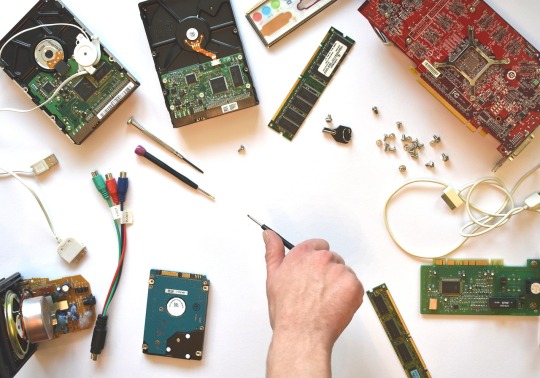
These days, some development boards come with an absolutely astounding variety of hardware. The EESP32, a tiny LoRa board with WiFi, Bluetooth, a transceiver that spans a large portion of the UHF band, and conveniences like OLED displays and an abundance of GPIO, are a perfect example. What about the documentation and firmware, though? Basically, do not say anything at all if you can not say something kind. Better yet, just take a roll. That is not true for every LoRa dev board available, of course, but [Rop] found that to be the case with the Heltec HTIT-WB32LA. This board needed some assistance to get over the line, but it has all the bells and whistles and would be ideal for LoraWAN and Meshtastic applications. Based on his fork of the RadioLib library, which includes a library that significantly lessens wear on the ESP32's flash memory, [Rop] has contributed a fair amount to this end. The library supports all of the hardware on the board, including the pushbutton, display, power management, battery charging, and blinkers, in addition to complete radio support. Many sample applications are included in [Jop], ranging from the minimal requirements to spin up the board to a fully functional spectrum analyzer. It is a wonderful piece of work and a wonderful way to support the LoRa community. And if you want to put one of these modules to work, you’re certainly in the right place. We’ve got everything from LoRaWAN networks to the magic of Meshtastic, so take your pick and get hacking.
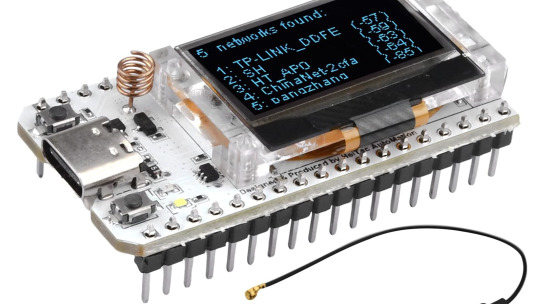
1 note
·
View note